Comet From Another Star System Headed Our Way
Comet 2I/Borisov originated from an unknown star system and has made its way from the cold dark of interstellar space into our neck of the woods.
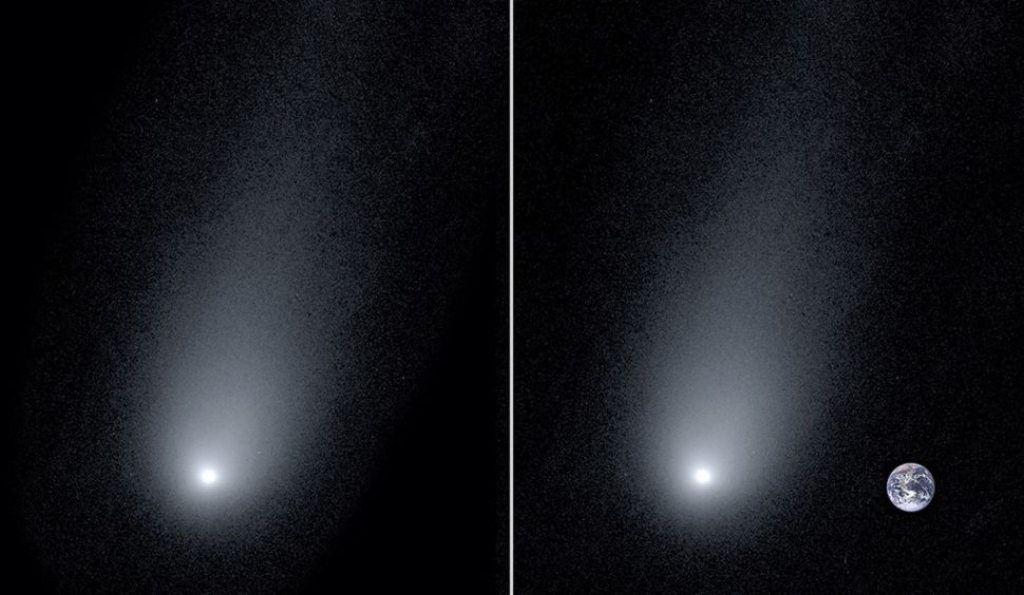
Astronomers have spotted something that’s only been hinted at once before, an interstellar comet that likely originated in another star system making its way to our Solar System:
SEWANEE, Tenn. — Something strange is sailing toward us. Something small and cold and extraordinarily fast. No one knows where it came from or where it is going. But it’s not from around here.
This is an interstellar comet — an ancient ball of ice and gas and dust, formed on the frozen outskirts of a distant star, which some lucky quirk of gravity has tossed into our path.
To astronomers, the comet is a care package from the cosmos — a piece of a place they will never be able to visit, a key to all the worlds they cannot directly observe.
It is only the second interstellar interloper scientists have seen in our solar system. And it’s the first one they’ve been able to get a good look at. By tracking the comet’s movement, measuring its composition and monitoring its behavior, researchers are seeking clues about the place it came from and the space it crossed to get here. They have already found a carbon-based molecule and possibly water — two familiar chemicals in such an alien object.
As the sun sinks behind the Tennessee mountains, and stars wink into view, astronomer Doug Durig climbs onto the roof of his observatory, powers up his three telescopes and angles them skyward.
Every night, the comet grows bigger and brighter in the sky, expelling streams of gas and dust that may offer up clues to its history. On Dec. 8, it will make its nearest approach to Earth, offering researchers an up-close glimpse before it zooms back into the freezing, featureless void.
Ordinarily, of course, the comets we are familiar with come from within our own Solar System, with most of them originating in a region far beyond Pluto and, when conditions are right, being sent on a journey toward the sun that either result in their ultimate destruction or sets them in an orbit that causes them to reappear on what generally becomes a predictable basis. The most famous of these reappearing comets, of course, is Halley’s Comet, which was first recorded as appearing in 1066 A.D., but which may have been recorded as far back as the 400 B.C. time period. Like clockwork, Halley’s Comet reappears every 75-76 years. It was last in the neighborhood of Earth in 1986 and is scheduled to reappear in 2061, According to calculations, it will make its closest known approach to Earth in 2134 when it will be 13 million kilometers of our planet. These comets are of particular interest because they are made up of some of the same material as the early planets were when the Solar System was first formed.
The comet that was spotted in this case, though, is of a different vintage. It appears to have drifted from a completely different star system, which one we cannot tell at this point apparently, and its composition is likely completely different from the comets we’re familiar with. As such, it is of particular interest to people studying planets orbiting stars other than our sun:
Scientists’ best hope for closely examining another solar system was to wait for a piece of one to come to us.
It was Aug. 30, in the quiet moments before dawn, when a self-taught astronomer in a Crimean mountain village spotted a faint smudge low on the horizon, barely distinguishable against the glittering background of stars.
Gennady Borisov submitted his observations to the Minor Planet Center, the astronomers’ clearinghouse for information about small bodies in the solar system, so other scientists could take a look.
One night later, halfway across the planet, the strange report caught Durig’s eye.
“I was the second person to observe it,” Durig said. “That confirmed the comet was real.”
Within a couple of weeks, scientists had collected enough observations to calculate the comet’s orbit. But they did not find the oval path that comets typically make around the sun. Instead, the orbit was hyperbolic — it did not close in on itself. The object was also traveling at the blistering speed of 93,000 miles per hour, far faster than any comets, asteroids or planets orbiting our sun.
“Wow,” said Davide Farnocchia, a navigation engineer at NASA’s Jet Propulsion Laboratory, who was among the first people to determine that the comet came from another star. “I was not expecting to see anything like that.”
There has been only one other interstellar object spotted in our solar system: a cigar-shaped rock named ‘Oumuamua, a Hawaiian word that translates to “messenger from afar.”
But ‘Oumuamua was already on its way out of the system when it was discovered in October 2017, and it was so faint that scientists were never able to view it as more than a single pixel of light. They were not quite sure what they had seen — was it a metallic, rocky asteroid or an icy,dusty comet? And they were unsure whether the detection was just a lucky fluke, never to be repeated, or a harbinger of things to come.
So researchers were thrilled when, less than two years later, another interstellar traveler arrived.
The new comet, which has been named 2I/Borisov (indicating its discoverer and its status as the second known interstellar object), is expected to be within reach of telescopes until fall 2020. At its closest approach, next month, it will be twice as far from Earth as Earth is from the sun.
Though it entered the solar system from the direction of the constellation Cassiopeia, scientists do not know yet where 2I/Borisov came from, or how long it has flown through the desolation of interstellar space. Given its current speed, it has certainly been traveling for millions, if not billions, of years.
As the object gets closer to the sun’s warmth, ices on its surface turn into gas. This creates the characteristic halo-like “coma,” which scientists can scrutinize to determine what the comet is made of. Already, 2I/Borisov has been observed more than 2,000 times.
“That’s going to be fun, in terms of looking at this object . . . as it comes in from the deep freeze for the very first time,” said Michele Bannister, an astronomer at Queen’s University Belfast. “Let’s open it up and see what we have with this particular present from another star.”
So this visitor in our night sky could tell us something about what exoplanets, planets from outside our Solar System, are like and what they are composed of. It’s even possible that the comet, like those that have existed in our own Solar System, could carry some form of evidence of the building blocks of life in another star system. Quite fascinating, really.
Photo via Space.com


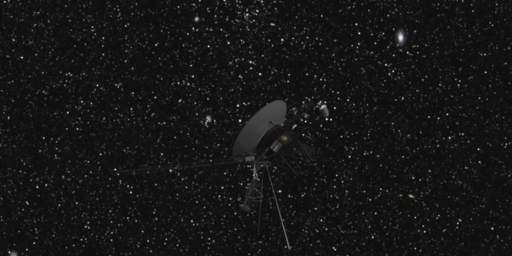
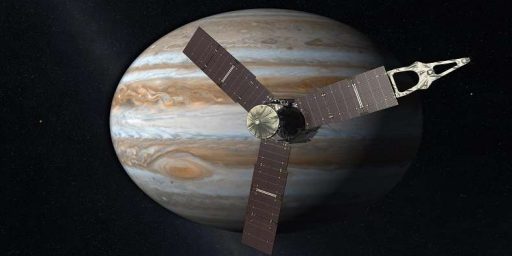
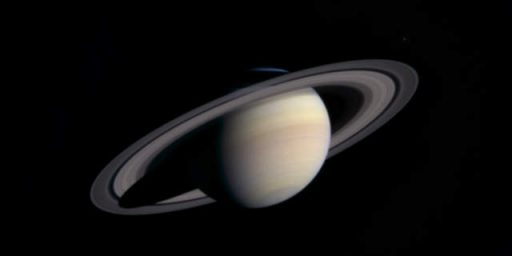
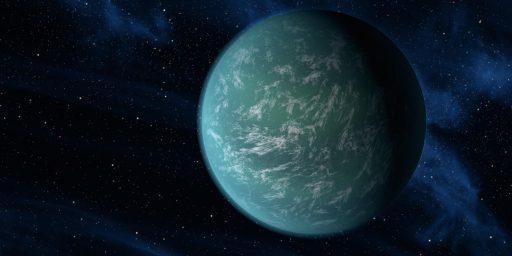
I’ll post something more serious alter, but right now I cant resist reminding you:
Ramans do everything in threes.
🙂
I wonder if this comet might be form our Solar system, only it has gained speed for some reason and is now leaving.
I admit it’s not likely, but long period comets can stay away from the inner Solar system for millennia at a time. The Oort cloud is really, really far away.
@Kathy:
According to the linked article, it’s still inbound, with perihelion on December 8 and closest approach to Earth ~3 weeks after that. It’s also coming in from well above the ecliptic. Apparently the consensus that it is extra-solar is pretty firm.
Doug, since you mentioned Halley’s Comet, I’ll take this opportunity to highlight a piece of trivia by my favorite author: Samuel Clemens aka Mark Twain. He was born in 1835, a Halley’s Comet year and for a good part of his life he claimed he would come in with the comet and go out with it too. He did so in 1910, at it’s next arrival.
@MarkedMan:
I love Twain’s writing, Well aware of the Halley’s Comet connection.
Which reminds me of a Star Trek TNG episode in which “Mark Twain” got brought to the 24th Century and was on the Enterprise. At one point he asked the person escorting him around the ship “You ever run into Halley’s Comet?”
@DrDaveT:
I wonder if they consider all possibilities. I know enough about celestial mechanics to understand an objects trajectory and relative speed can determine where it came from, or where it didn’t come from. But having two interstellar bodies pass through so close to each other seems rather long, long odds.
Unless interstellar bodies like these are far more common than we thought.
BTW, speaking of bad education, finding “a carbon molecule and water” in a comet is about as rare as finding sand in the Sahara desert. granted this might not be so of comets originating around other stars, so it’s pertinent to know. But hardly surprising.
@Kathy:
If they can deduce the speed and velocity and mass they can tell right away if it’s compatible with some sort of huge, oblong orbit. It appears to be moving way too fast for that. It sure as hell didn’t pick up that kind of velocity from a close encounter with anything in our asteroid belts, it would take a star of black hole to sling something that big that fast.
Knowing nothing about this, I have nothing to offer beyond…this is pretty friggin’ cool stuff.
But Haley’s Comet…
In ’86 I was working in Miami, and one Friday night some friends and I decided to take a rum and cocaine fueled trip (c’mon, it was Miami in the mid-eighties) down to the Keys to check out the Comet.
We lucked upon a group of amateur astronomers set up away from the road along a very secluded and very dark beach, who were more than happy to let us look at the comet thru their telescopes.
I remember muttering that, “OK, that”s cool but I’m not sure it’s worth driving hundreds of miles to see.” I instantly realized I had insulted this poor guy who was being very generous to a bunch of 20-somethings on drugs. To his credit he seemed to take it in stride…and responded, “oh yeah, well, check this out then”.
With that he punched a couple buttons on his controller, and the telescope whirled around and tilted a bit…
When I looked…there it was…Saturn and her Rings filled the eye-piece.
One of the most stunning things I’ve ever seen…
@dazedandconfused:
I’m suspicious of long odds hitting. Sure, they do now and then, but it’s still unusual. Suppose two people in the same city block won the national lottery in consecutive months. That’s very long odds.
Granted, we don’t know the density of extra-stellar small objects.If solar systems routinely expel small objects, then there are trillions out there. Most solar systems contain more than one star, BTW, and I can see the interplay between tow or more stars greatly speeding up asteroids and comets. Then, too, you have all these gas giant planets nearer to their stars than Venus and Mercury which might mess things up.
So, who knows.
But I’m still suspicious or what seems to be beating literally astronomical odds.
@Kathy:
I should talk about this with the planetary guys in my department. IIRC, the velocity is the key here. Collisions can happen in the Oort cloud and send comets inward (as could a near passage by another star). But for that kind of speed, you’d need an encounter with something quite large. Not a black hole necessarily, but something quite big. That and the angle indicate extrasolar origin.
@Hal_10000:
Oh, don’t bother, I’m sure the velocity figures are right.
What should be looked at is how common interstellar objects are. If we keep an eye out, and find one every few years, then they’re very common.
Interstellar anything is really astonishing.
That is remarkable. The distance and time and the likelihood that it could be captured by a gravity sink. And Ouroborous what a year and a half ago.
One of the ludicrously bizarre bits of Starship Troopers was that civilizations flung asteroids at their enemies. It would take decades to centuries to hit and slightest orbital wobble would mean it would be impossible to aim. Likely it would miss the entire system.
Of course, Starship Troopers was a cheeky take on Hitler youth, and not actually about intersystem space warfare.
What affects this will have on the earth remain to be seen, but there are other events that we need to be aware of. One is the prediction of an asteroid hit or close call in May of 2020.
In the last few years waves of energy from solar storms have increased radiation levels on earth. The magma levels under the earth have risen. These in themselves would be responsible for warmer temperatures in some areas. There is the possibility that the earth’s tilt has changed slightly.
There is the increasing activity on the Fire Rim and the instability of the Cascadia zone.
A couple of years ago there were the “rain bombs” with huge down pours and straight line winds. Last week was the huge winter “snow bomb” storms with cataclysmic winds. The magnetic field is shifting. Lightning is more powerful. There are other signs that point to abnormal conditions: flocks of birds falling from the sky, locusts swarms so thick that they block the sun.
More cataclysmic events are imminent. Yet the US Congress doesn’t seem interested, nor the main stream news media.
See: “Astronomers say a Neptune-sized planet lurks beyond Pluto” (Science Mag) Also confirmed by NASA
“ 4-Kilometer Planet-Killer Asteroid Headed Towards Earth In 2020, May Cause Human Extinction” (Business Times)
“First Interstellar comet could explode!!!” (Paul Begley)